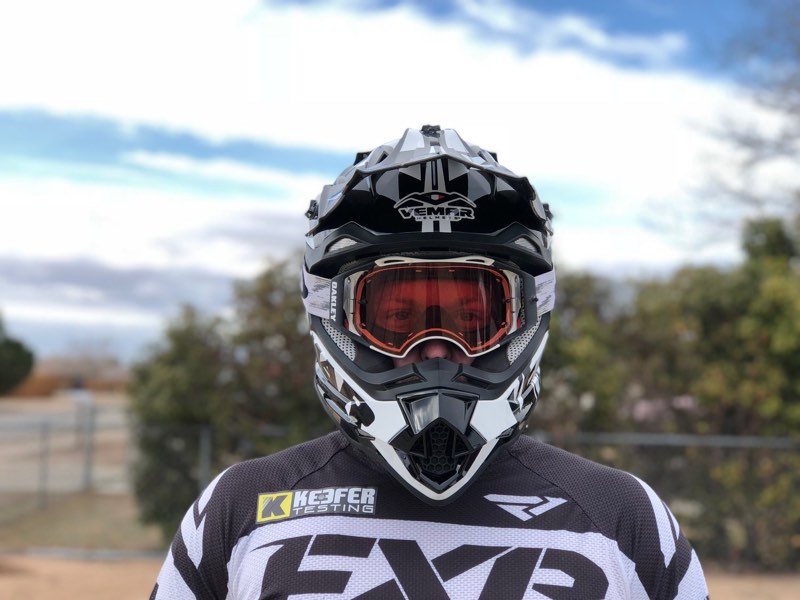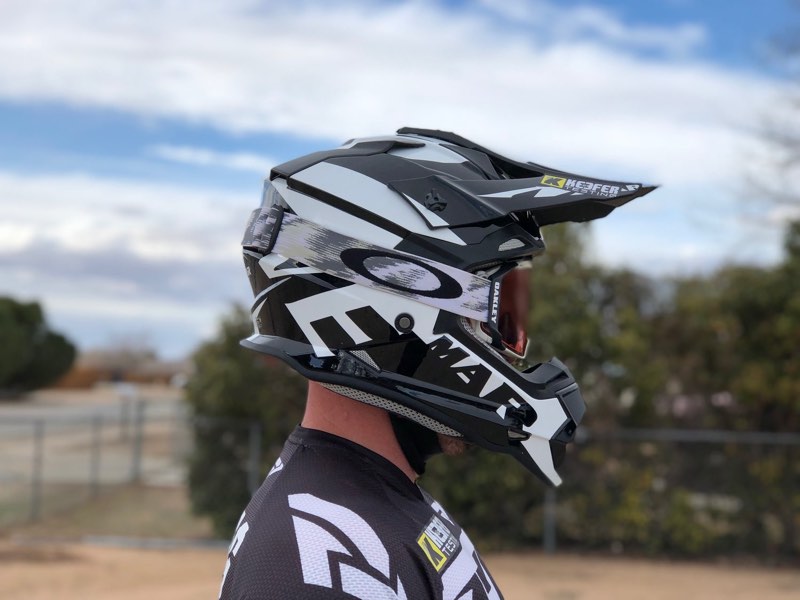Share This Article
When asked by Kris to try the new Vemar Taku helmet, I was happy to give it some of that honest Keefer Inc. Testing feedback. While I do not “write” a ton, I do “ride” a lot and have purchased many helmets over my 15 plus years that I have been riding dirt bikes. Vemar has been in the helmet market since 1987, but I have never worn one myself until now. I have been a Bell, Shoei, Arai and 6D owner, but never a Vemar. I did learn through this time testing the Vemar Taku that the company was was one of the first helmet manufacturers to use Kevlar carbon and multi-composite materials in off-road helmet construction. Although Vemar isn’t new to the helmet market, they are not as well known here in the states as they are in Europe. Known mainly for their premium VR-X9, Vemar brought in the Taku, which is a new, lower price point helmet to their lineup.

Upon arrival of the Vemar Taku helmet I didn’t really know what to expect, as Vemar is not as well known in the states as let’s say Bell or Shoei. We do know Vemar already has a premium helmet to their name and I was anxious to see what Vemar had to offer in the lower price point realm. To my surprise when I pulled the Taku out of the box I noticed its distinct euro style. As soon as you look at this helmet you can tell it is an Italian born lid, as most European helmets have very sharp lines and more of a squared off look compared to the traditional round look of many helmets. After picking up the Taku you notice how light it feels once you pick up and put it on your head. Vemar claims 3.1 pounds for the medium shell size I received and that weight was true on the scale. The Taku helmet is DOT approved, meets the ECE standard (which is the European version of the USA DOT standard), but is not Snell approved. The Taku is constructed with a R-3P shell with reinforced thermo-polymers offered in six sizes ranging from XS through XXL. Vemar also offers a five year manufacturer warranty on their helmets, but this warranty is from the manufacturer date not date of purchase. The Taku does offer a great ventilation with their VKS (Vemar Klima System) with intake ports above the goggle frame, along with two upper vents and one chin intake vent to help pull the cool air into the helmet. To aid in extracting the air, Vemar uses what they call their hot air exhaust system, which works in conjunction with their VKS vents to help pull hot air from the helmet. Vemar offers the Taku in six different designs and color ways, so you have plenty of options to help you look your best at the track. The Taku has removable cheek pads and an inner liner that are completely replaceable/washable.
When you first slide the Taku helmet on your head you do notice that the inner liner is very plush and feels good on your face. The Taku is more of a mid-oval shape and gives you more room front to back than ear to ear. Like I mentioned earlier, the Taku does feel as light as the scale says (when riding with it) and that is a very good trait to have especially during a longer off-road race. Some helmets feel great right away with little to no break in, but the Taku is not one of those helmets. The first 15-20 minutes of ride time the Taku felt as if it didn’t conform to my head as quickly as others, but the more time I spent with it, the better it started to feel. With intake vents above the goggle frame and two upper intake vents on top of the helmet it definitely keeps the fresh air circulating through the helmet. I am normally a heavy sweater, so ventilation is important to me when racing longer GP style events. I had no issues with ventilation with the Taku, but this can be a catch 22, since the Taku has no way of blocking off the vents. Even though I would never block off the vents living here in California, I can see this being a drag for you east coast riders, on very cold days where your head will get a little chilly. I do notice that more sound (similar to a 6D ATR-1) does gets through the Taku compared to a Bell or Shoei, so you may want to consider ear plugs if it is too bothersome. I had some issues with the eye port while wearing larger framed goggles like an Oakley AirBrake and Scott Prospect. You really had to take your time and work the goggle in to find that sweet spot for proper sealing. The Taku is neck brace friendly and works well with the Leatt GPX-5.5 and Atlas neck braces. When used with these neck braces I had no movement issues while riding, had normal range of motion and the Taku never obscured my line of sight while looking far enough forward down the trail. The Taku has a long visor, which did take a couple laps to get used to, but offers great protection from roost and helps with the sun on evening motos.

No, I haven’t taken a spill in the Taku yet (knock on wood), but I do feel safe enough when riding with it. Yes, I do have some gripes with this helmet, mostly having a smaller eye port area and a longer than normal break in time, but to me Vemar did a very good job building a lower price point helmet that is fairly comfortable. The ventilation is a strong point; flowing more air than some premium helmets I have worn in the past, it’s light, is compatible with neck braces and has a 5 year manufacturer warranty. In my opinion you are getting a great value for an entry level helmet. For the rider on a budget or if you’re new to the sport, this could be a good option, if cost is an issue. Head over to vermarhelmets.net to view all the models. -Matt Sirevaag (Pay For My Own Stuff, Blue Collar Electrician, 9-5’er)
